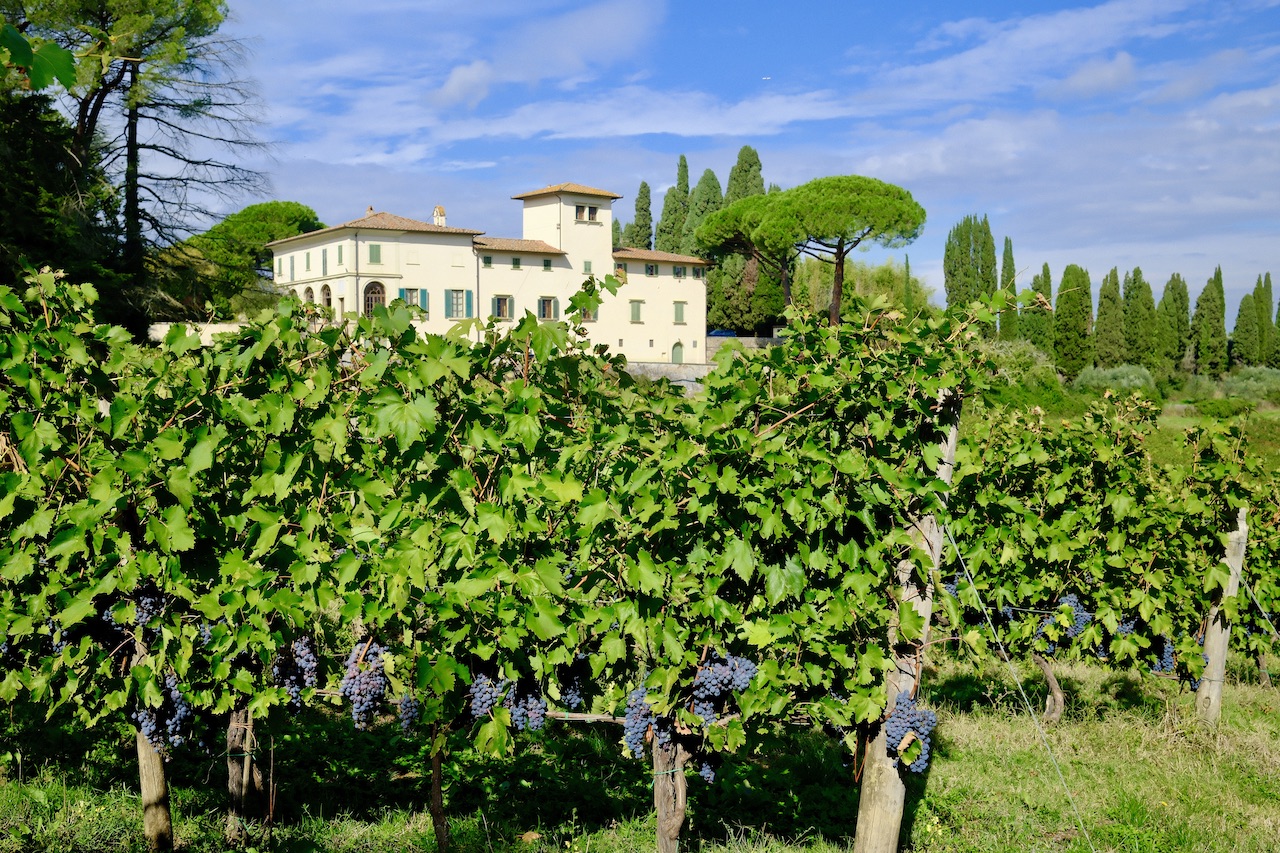Wine Tours in Tuscany - About Angie - +39 3333185705 - angie.chianti@gmail.com
Barolo, often referred to as the “King of Wines and Wine of Kings,” is a distinguished red wine that comes from the Nebbiolo grape, primarily cultivated in the Piedmont region of northwestern Italy. This region, characterized by its fog-covered hills (“nebbia” means fog in Italian, hinting at the origin of the grape’s name), provides the perfect terroir for the Nebbiolo grape to thrive. The area designated for Barolo production encompasses 11 villages, with the most notable ones being Barolo, La Morra, Monforte d’Alba, and Serralunga d’Alba, all located south of the city of Alba and within the broader Langhe countryside.
Vitigno: The Nebbiolo Grape
Nebbiolo is celebrated for its ability to produce wines of profound depth and complexity. It is a grape that demands patience, both in the vineyard and the cellar. Nebbiolo grapes are notable for their thin skin, high tannin, and acidity, which contribute to the aging potential of Barolo wines. The wines made from Nebbiolo are typically rich in flavor, with aromas of cherries, roses, and, as the wine ages, leather, truffles, and tar.
Cultivation Region: Piedmont’s Pride
The cultivation of Nebbiolo for Barolo wine is strictly regulated, confined to the misty hills of Piedmont, where the microclimates and varied soil compositions of the Langhe region play a crucial role in the grape’s development. The unique combination of warm days and cool nights extends the growing season, allowing Nebbiolo to achieve its full phenolic maturity while maintaining the essential acidity that defines its character.
Barolo vs. Barbera
While both Barolo and Barbera wines originate from Piedmont and share a deep connection with the region’s winemaking tradition, they are distinguished by the grape varieties used, winemaking styles, and the resulting wine profiles.
- Barbera, made from the Barbera grape, is known for its deep color, low tannins, and high acidity, making it a versatile wine that ranges from light and youthful to more complex, aged variations. Barbera wines typically exhibit flavors of dark cherry, plum, and spice, with a more straightforward fruit-driven character compared to Barolo.
- Barolo, in contrast, is made exclusively from the Nebbiolo grape and is celebrated for its complexity, depth, and aging potential. Barolo wines are more structured than Barbera, with a robust tannin profile and a nuanced bouquet of aromas that evolve significantly over time. The rigorous aging requirement for Barolo (a minimum of 38 months, 18 of which must be in wood barrels) contributes to its complexity and the development of its distinctive tertiary aromas.
In essence, while Barbera offers immediate pleasure with its fruit-forward profile and approachability, Barolo invites a more patient exploration, rewarding wine enthusiasts with a rich tapestry of flavors and aromas that unfold over years, if not decades. Both wines, however, stand as pillars of Piedmont’s viticultural excellence, each telling its own story of the region’s rich winemaking heritage.





